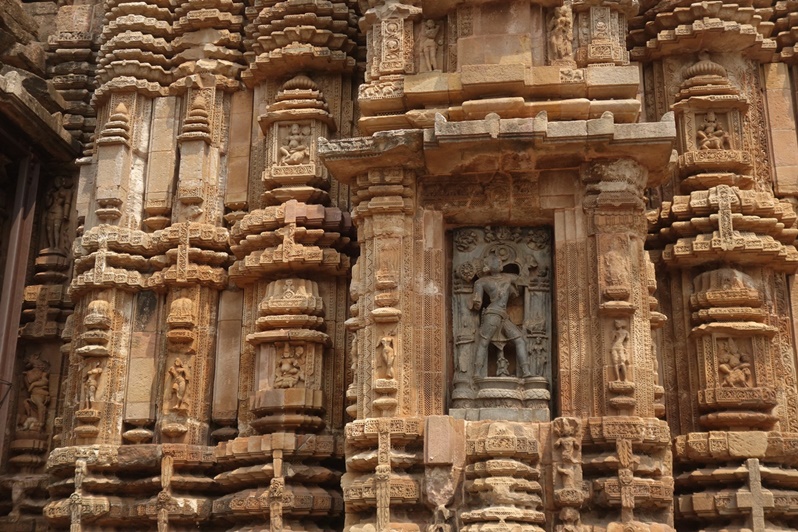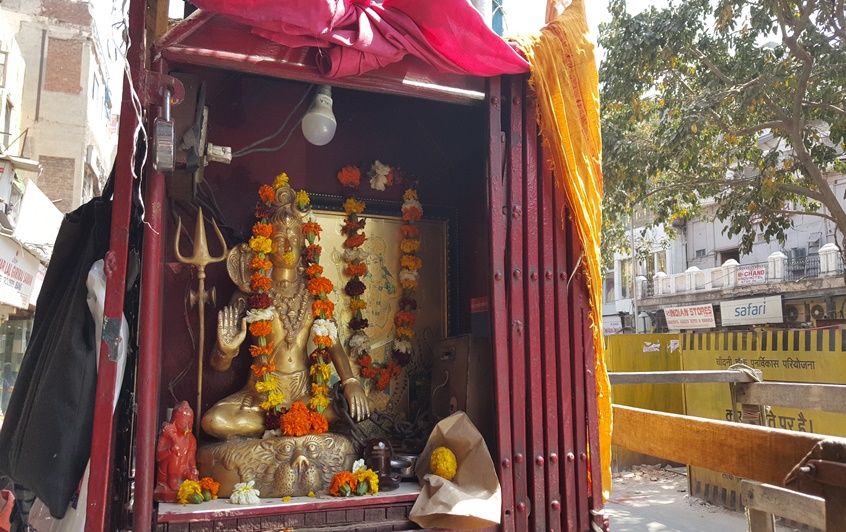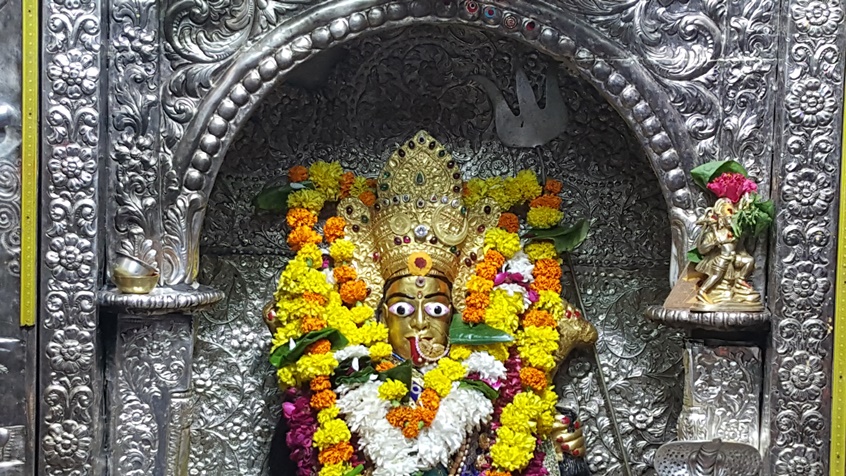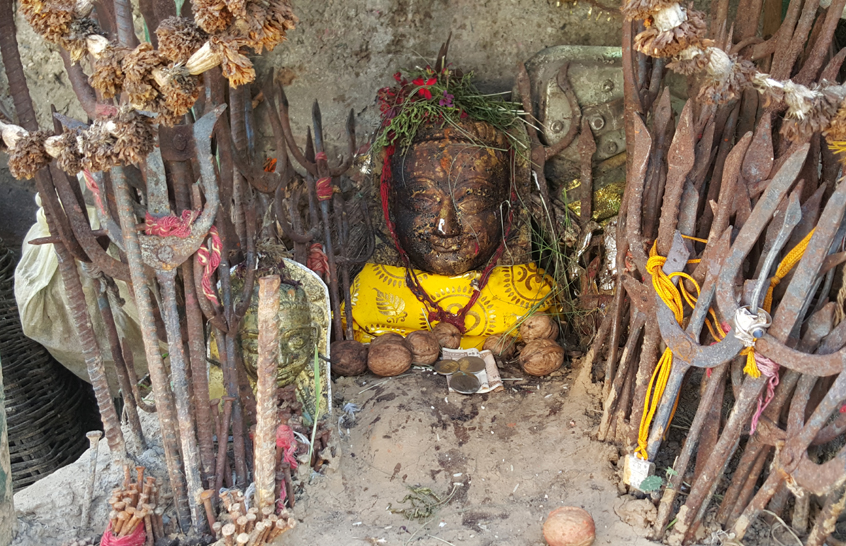par Bertrand Bellaize, le 06 mars 2024
Hindouisme : Divinité– Hanuman-le-grand-heros
Hanumân, le dieu Singe, est réputé pour sa force (il serait capable de soulever des montagnes), sa vaillance et sa bravoure. Il est très populaire dans les villages indiens et auprès des lutteurs.
Hanumân est le fils du vent Vayu et d'Anjanâ (nommé alors Pavan Putra : fils du vent), une belle apsara qui avait été maudite et transformée en guenon. C'est un des grands héros du Ramâyanâ : dans sa guerre contre le démon Ravana, Hanuman fût le plus fidèle allié de Rama : chef de l'armée des singes, il est reconnu pour ses hauts faits guerriers mais surtout pour ses vertus : bravoure, fidélité, clairvoyance, droiture, chasteté.
Hanuman est aussi l’incarnation de Shiva.
Il est très populaire en Inde et les singes qui vivent en liberté sont considérés comme ses parents.
Hanuman : héros du Ramâyanâ ou Mahâvira, le grand héros
Rama (une des incarnations de Vishnu sur terre), fils du roi Dasharatha, était connu pour sa bravoure, sa probité, sa grande force et son adresse : en visite au royaume de Janaka, il réussit à bander l’arc sacré de Shiva et put ainsi se marier à Sita ; dans le même temps, ses frères furent eux aussi unis à la famille royale et notamment Lakshama (son frère bien aimé) à Umilâ.
Ecarté du trône par ruse, Sita et Rama vécurent en exil pendant 14 ans : dans la forêt de Dankaka, la démone Shûrânakhâ s’éprit violemment de Rama qui se refusa à elle. Folle de rage, elle demanda l’aide de son frère puis de Ravana, le puissant roi de Lanka pour se venger. Par ruse, il enleva Sitâ.
Partis à sa recherche Ramâ et Lakshama, rencontrèrent en chemin, le roi des singes Sugrivâ qu’ils aidèrent à retrouver son trône : en remerciement, il leur proposa toute l’aide de son peuple et Hanuman fut nommé chef de cette armée.
Une immense bataille se déroula à Lanka, donnant lieu à d’innombrables morts. Empoisonnés par les flèches de Ravana, de nombreux singes auraient succomber si Hanuman n’était allé chercher d’un bond prodigieux une plante médicinale situé dans l’Himalaya sur le mont Mahudaya dont il rapporta tout un pan.
Hanuman-Bajrangbali, Qui a la force de la foudre, possède ainsi aussi un coeur d’or.
Au delà du poème épique, le Ramâyanâ est avant tout un moyen habile de transmission orale de l’enseignement hindou au plus grand nombre : captivant il permet à tous de s’identifier aux héros masculin et féminin tout en distillant des valeurs fondamentales : foi et abandon au divin, amour inconditionnel, courage, force...
Les qualités de Hanuman
Force prodigieuse, immortalité, intelligence remarquable qui se révèle lors de nombreux exploits (construction d’un pont entre le Tamil Nadu et Lanka...), pouvoir de voler, de transformer son corps (et de se muer en géant…), les qualités de Hanuman sont nombreuses et sucite l’envie et l’admiration de ses nombreux fidèles.
Le Râmâyana le décrit ainsi : « Le singe sacré est parfait ; nul ne l’égale dans les shastras, les lois), ni dans les apprentissages, ni pour comprendre le sens des écritures, (ni pour se déplacer à loisir). Il est bien connu qu’Hanumân est le neuvième auteur de la grammaire ».
Il incarne aussi la chasteté, ce qui lui aurait permis de garder tous ses pouvoirs.
Cependant Hanuman est surtout vénéré pour sa loyauté, son service à Rama : il représente le fidèle servant doublé d’une totale droiture, d’un dévouement sans pareil.
Choisi par les guerriers, les soldats, les lutteurs en tant qu’Ishta Devata (divinité choisi par chacun à titre personnel), il est aussi le favori de ceux qui chérissent l’amitié, la dévotion comme valeur fondamentale.
Il existe bien entendu de nombreux temples consacrés à Hanuman partout en Inde.
Il est honoré le mardi et le samedi, des offrandes de fruits et légumes rouges lui sont offerts tout comme du safran, du sucre complet non raffiné, du riz... Sa couleur est le rouge (énergie, feu...)
Son pouvoir de guérison lui confére aussi une grande popularité. De nombreuses amulettes contenant ses mantras ou effigies sont ainsi portées pour protéger de la maladie.
Les représentations de Hanuman
Il est tantôt totalement figuré en singe mais parfois il possède un corps d’homme et seule sa tête et sa longue queue blanche rappelle le singe.
Il est souvent montré à genoux, ou faisant le mudra de protection.
Debout, dans la posture dite du Pranam : salutation qui marque un grand respect en Inde, les deux mains sont jointes à hauteur de la poitrine.
Hanumân, dans cette posture de salutation rappelle son rôle, éminemment important de fidèle serviteur: son attitude digne; sa massue qui peut l’accompagner rappelle ses formidables qualités de combattant, de dévouement, de droiture. Les yeux mi-clos (intériorité) nous indiquent qu'il est aussi d'une grande sagesse.
Debout également on peut le voir déchirer sa poitrine afin de révéler Rama et Sita dans son coeur.
Panchmukhi : Le grand disciple
Dans le Ramâyanâ pour sauver Rama et Lakshman, Hanuman dut tuer Ahiravana qui les avait enlevés et cachés à Pathala Lokha : la seule façon de réussir cet exploit fût d’éteindre en même temps cinq lampes brûlant dans 5 directions différentes et qui cachaient la vie du démon. Le moyen trouvé par Hanuman fut de prendre la forme de Panchkhumi.
Avec ses cinq visages, 10 bras et autant d’attributs, il symbolise le disciple complet
Les 5 visages possèdent de nombreuses significations dont :
- les 5 sens, les 5 éléments (ciel, air, terre, feu, eau) : ces aspects ont tous été transcendés par Hanuman lors de ses exploits héroïques dans le Ramayana.
- cinq formes de cultes
Hanuman rassemble alors les nombreuses qualités des avatars de Vishnou : connaissance/sagesse (Hayagriva), victoire et absence de peur (Narashima), succès, bravoure, pureté de l’esprit (Hanuman), vitesse, omniprésence (Garuda) ainsi que la prospérité, la richesse(Varaha).
Ses 10 bras portent chacun un attribut différent : l’épée, la massue, la hache, le vase, le trident, le disque, … marquant sa force et son intelligence.
Hanuman Panchmukhi est invoqué lorsqu’il est besoin d’affronter des défis immenses qui demandent de nombreuses qualités et moyens.
Les peintures le montrent aussi bondissant en tenant la montagne abritant la plante médicinale qui guérira ses compagnons guerriers mortellement touchés.
Sources
Sarah Combe - Un et Multiple – Editions Dervy
Alain Daniélou : Mythes et Dieux de l’Inde Editions Champs
Promenades avec les dieux de l’inde Catherine Clément Editions Points



